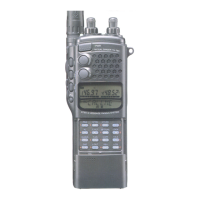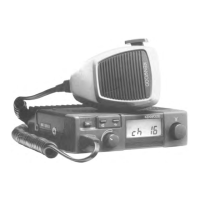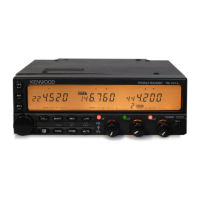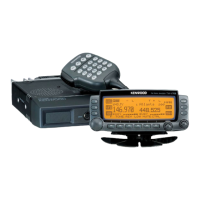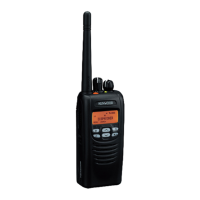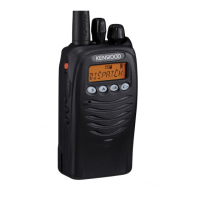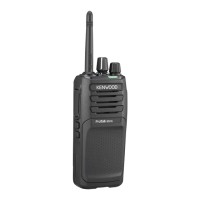From The N3UJJ.COM Document LibraryFrom The N3UJJ.COM Document Library
OVERVIEW
Similar to DTSS, Page uses DTMF codes to address a
single station or a group of stations. Page is useful
when waiting to receive a call from a specific station. A
common Group Page code and individual Station codes
should be agreed on in advance. You can select codes
from the range 000 to 999 inclusive.
Unlike DTSS, Page offers the added benefit of
identifying who called you. The calling station's code
appears on the target dual bander's display. If called
with an individual Station code, that station's code
appears; if called with a Group code, the Group code
appears. This characteristic of Page helps reduce the
activity level on a frequency when operators are
temporarily absent from their stations. There is
no
longer a need for repeated calls when your target
station is not listening. On return to his or her operating
position, their dual bander display will show your
Station code. They will know immediately that you
called.
!ndivtdual Code:
22:2
MamtJar 1
50
!ndl-\lldual Coda: 333
Membsr 2
PAGE
PAGE
CODE
MEMORY
The dual bander has 8 Page memories on each band.
A Stores your Station code.
--
Stores the calling station's code. The dual
0
bander automatically stores this code
while in Receive. You also can use the
stored code to respond to the other
station.
1
to
6
Stores Group codes or Station codes that
you want to call.
Group Communication Network Example
Predetermined frequency 145. 020
MHZ
Your Individual code
111
Member 1 Individual code 222
Member 2 Individual code 333
I
Member 3 Individual code 444
Group code 789
\ I Your
memo~
I I
~
111
I
I 1
222
\ Member 2 A 333
I 2
333
I 3 789
l
3444
J I
A4441
i
~
l Member
3_4
789
~?~
__
.-=~--~-·------------------~
I A
2221
J Member 1
2 789
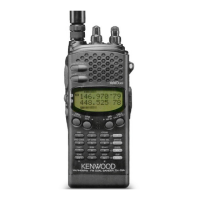
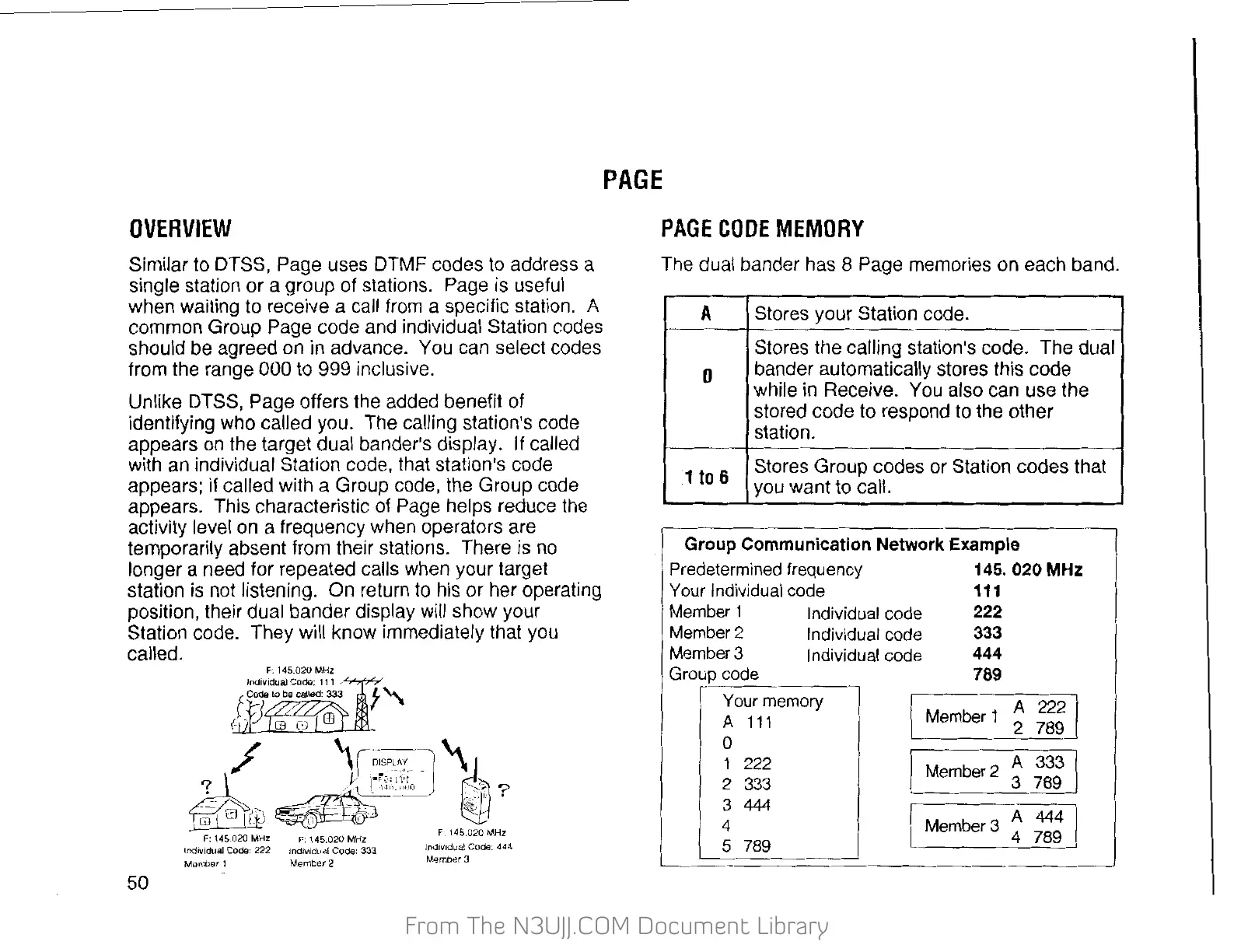